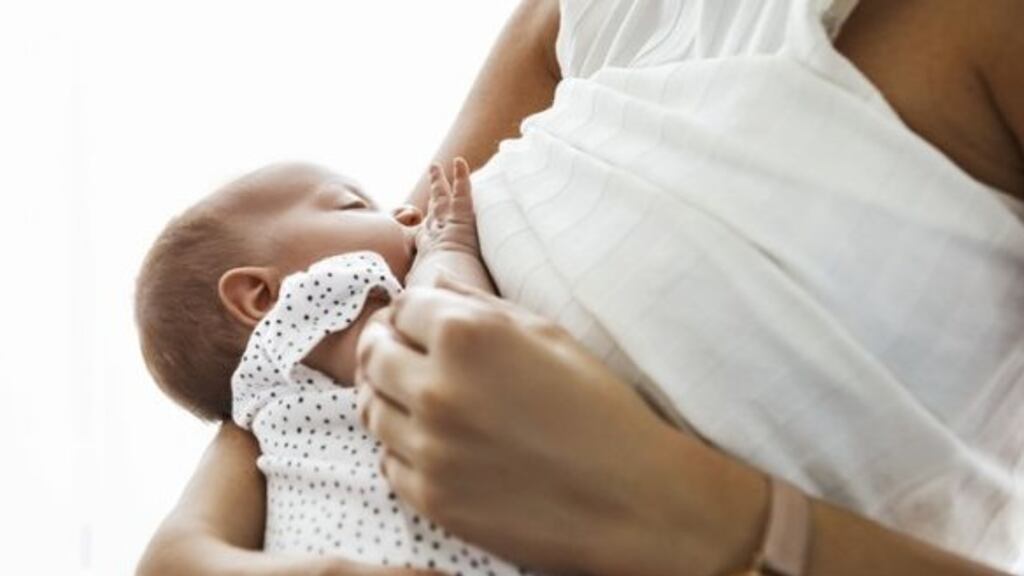Ireland has one of the lowest breastfeeding rates in the world, with only two out of three women initiating it before leaving the maternity hospital, according to a new report.
In one smaller maternity unit, just one in three women try breastfeeding their newborn during their stay, according to the Irish Maternity Indicator System 2019 national report.
Nationally, 63.8 per cent of woman initiate breastfeeding at their baby's first feed, compared with rates of 90 per cent in Australia, 81 per cent in the UK and 79 per cent in the US, the report points out.
On discharge, just 37.3 per cent of mothers are breastfeeding, with one maternity unit recording a rate of under 20 per cent, the 2019 figures show.
Last year, only 19,076 out of 51,152 babies born in 18 out of 19 maternity units were being exclusively breastfed on discharge from the maternity hospital.
Prof Michael Turner, clinical lead, HSE national programme for obstetrics, described the figures as disappointing.
According to a World Health Organisation target, half of all newborns should be exclusively breastfed after six months. According to the most recent figures, 13 per cent of Irish babies are breastfed after six months, compared with a European average of 25 per cent and a global average of 38 per cent.
Decrease in births
The total number of births in Ireland has fallen by almost 12 per cent since 2014 and almost 20 per cent since 2008.
Last year, there were 59,352 births, down from 61,084 the previous year.
"The decrease in births over the last decade may reflect a fall in immigration from eastern Europe and a fall in family size," said Prof Turner. "This has implications for the maternity services but also, in due course, for class sizes in schools."
There were 1,068 multiple births last year, or 1.8 per cent of all births, with the highest rate of multiple deliveries occurring in large maternity hospitals in Dublin and Cork. The report says this has “serious” implications for the provision of services at these sites.
Last year, there were four maternal deaths, defined as death during pregnancy or within 42 days of the end of the pregnancy. Two of them occurred in the same hospital. There were six maternal deaths in 2018.
Miscarriage misdiagnosis
The report says it is disappointing that two cases of miscarriage misdiagnosis were reported, the same as in 2018. “While miscarriage is common, estimated as affecting one in five pregnancies, incorrect diagnosis of miscarriage may result in some pregnancies being terminated unnecessarily.”
It says an increase in the incidence of swabs being unintentionally retained in women after delivery is concerning. Two of the six cases occurred in the same hospital. In one unit, more than half of all women having their first baby were delivered by Caesarean section.
The overall rate of Caesarean sections increased again, to 34.3 per cent of all births. Rates varied from 27 per cent to 41 per cent across different maternity units.
The number of perinatal deaths, which includes stillbirths and early neonatal deaths up to six days, increased by 19.7 per cent year on year, though Prof Turner said the rise may be due to “random variation”.
Some 73 newborns were sent for whole body cooling, a technique used to minimise the risk from oxygen deficiency during birth.
There was a significant fall in eclampsia cases, from 21 to 11, while 68 cases of maternal sepsis were recorded.








